Related Research Articles

Heraldry is a discipline relating to the design, display and study of armorial bearings, as well as related disciplines, such as vexillology, together with the study of ceremony, rank and pedigree. Armory, the best-known branch of heraldry, concerns the design and transmission of the heraldic achievement. The achievement, or armorial bearings usually includes a coat of arms on a shield, helmet and crest, together with any accompanying devices, such as supporters, badges, heraldic banners and mottoes.

The Isle of Man had become separated from Great Britain and Ireland by 6500 BC. It appears that colonisation took place by sea sometime during the Mesolithic era. The island has been visited by various raiders and trading peoples over the years. After being settled by people from Ireland in the first millennium AD, the Isle of Man was converted to Christianity and then suffered raids by Vikings from Norway. After becoming subject to Norwegian suzerainty as part of the Kingdom of Mann and the Isles, the Isle of Man later became a possession of the Scottish and then the English crowns.

1668 (MDCLXVIII) was a leap year starting on Sunday of the Gregorian calendar and a leap year starting on Wednesday of the Julian calendar, the 1668th year of the Common Era (CE) and Anno Domini (AD) designations, the 668th year of the 2nd millennium, the 68th year of the 17th century, and the 9th year of the 1660s decade. As of the start of 1668, the Gregorian calendar was 10 days ahead of the Julian calendar, which remained in localized use until 1923.
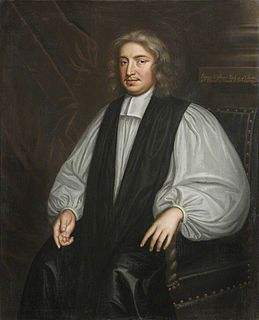
John Wilkins, was an Anglican clergyman, natural philosopher and author, and was one of the founders of the Royal Society. He was Bishop of Chester from 1668 until his death.

A gentleman is any man of good and courteous conduct. Originally, gentleman was the lowest rank of the landed gentry of England, ranking below an esquire and above a yeoman; by definition, the rank of gentleman comprised the younger sons of the younger sons of peers, and the younger sons of a baronet, a knight, and an esquire, in perpetual succession. As such, the connotation of the term gentleman captures the common denominator of gentility ; a right shared by the peerage and the gentry, the constituent classes of the British nobility.
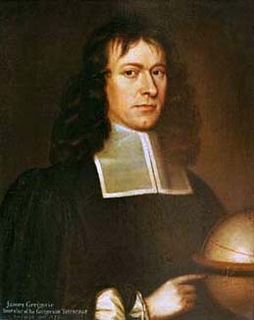
James Gregory FRS was a Scottish mathematician and astronomer. His surname is sometimes spelled as Gregorie, the original Scottish spelling. He described an early practical design for the reflecting telescope – the Gregorian telescope – and made advances in trigonometry, discovering infinite series representations for several trigonometric functions.

Castletown is a town in the Isle of Man, geographically within the historical parish of Malew but administered separately. Lying at the south of the island, it was the Manx capital until 1869. The centre of town is dominated by Castle Rushen, a well-preserved medieval castle, originally built for a Viking king.
King William's College is an independent school for pupils aged 3 to 18, located near Castletown on the Isle of Man. It is a member of the International Baccalaureate and Headmasters' and Headmistresses' Conference organisations. The College operates at two sites in or near Castletown: a main senior school campus on the shore of Castletown Bay, and a prep school in the Westhill part of Castletown, two miles from the main campus. The College was originally for boys only, but became co-educational in the 1980s. It has roughly five hundred pupils, many from beyond the British Isles.
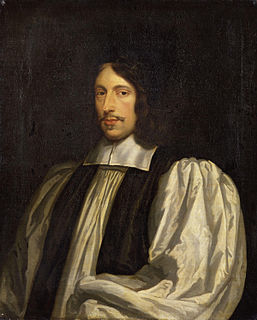
Nathaniel Crew, 3rd Baron Crew was Bishop of Oxford from 1671 to 1674, then Bishop of Durham from 1674 to 1721. As such he was one of the longest serving bishops of the Church of England.

Sodor is a fictional island featured as the setting for The Railway Series books by the Rev. Wilbert Awdry, begun in 1945, and for the popular Thomas & Friends television series since 1984. It is depicted as being located in the Irish Sea, between the Isle of Man and the English mainland near Barrow-in-Furness in Cumbria.

The most basic rule of heraldic design is the rule of tincture: metal should not be put on metal, nor colour on colour. This means that the heraldic metals or and argent should not be placed on each other, nor may any of the colours be placed on another colour. Heraldic furs as well as "proper" are exempt from the rule of tincture.
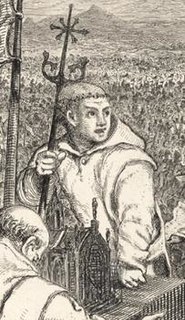
William de Lamberton, sometimes modernized as William Lamberton, was Bishop of St Andrews from 1297 until his death. Lamberton is renowned for his influential role during the Scottish Wars of Independence. He campaigned for the national cause under William Wallace and later Robert the Bruce. As Bishop of St Andrews, the most powerful seat in Scotland, Bishop Lamberton along with Bishop Robert Wishart of Glasgow conducted the coronation of Robert the Bruce as King Robert I. Lamberton would go on to have a vital role in the formulation of the Declaration of the Clergy 1310 and the Declaration of Arbroath which would lead to Scottish Independence.
Corrin is a surname of Gaelic origin. It is a contraction of MacCorran or McCorryn, an anglicised form of the Gaelic Mac Odhráin or fuller Mac GilleOdrain. This surname is considered to be an patronymic name, meaning "son of Odhran". The personal name Odhrán means "pale-faced" or "the little pale-faced one". Corrin may also represent anglicized forms of Mac Thorfinnr, which means "Thor's find", and Mac Corraidhin, meaning "little spear". The earliest form was first documented on the Isle of Man as Maktory, MacThoryngt and later rendered as either MacCorrane or McCorryn, and later reduced as Corrane, in the year 1422 and as Corrin in 1504. This name first appeared in Manx Gaelic on the Isle of Man sometime pre-13th century, but its origination can also be found in the countries of Scotland and Ireland. In Scotland, any variation of the name may be considered a sept for their associations with clans such as Clan MacDonald (MacCorran), Clan Cameron (MacOran), or Clan Campbell.
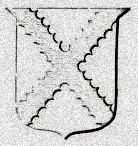
Nicholas de Balmyle, also called Nicholas of St Andrews, was a Scottish administrator and prelate in the late 13th century and early 14th century. A graduate of an unknown university, he served his earliest years as a clergyman at St Andrews, moving on to hold churches in Lothian as well as deputising to two archdeacons of Lothian.
Isaac Barrow was an English clergyman and Bishop, consecutively, of Sodor and Man and St Asaph, and also served as Governor of the Isle of Man. He was the founder of the Bishop Barrow Trust. During his time as Bishop of Sodor and Man and Governor of the Isle of Man, he enacted significant social, political, and ecclesiastical reforms. He is sometimes confused with his more famous namesake and nephew, Isaac Barrow (1630–1677), the mathematician and theologian.

English heraldry is the form of coats of arms and other heraldic bearings and insignia used in England. It lies within the so-called Gallo-British tradition. Coats of arms in England are regulated and granted to individuals by the English kings of arms of the College of Arms. An individual's arms may also be borne ‘by courtesy' by members of the holder's nuclear family, subject to a system of cadency marks, to differentiate those displays from the arms of the original holder. The English heraldic style is exemplified in the arms of British royalty, and is reflected in the civic arms of cities and towns, as well as the noble arms of individuals in England. Royal orders in England, such as the Order of the Garter, also maintain notable heraldic bearings.

William Cole, was a Cambridgeshire clergyman and antiquary, known for his extensive manuscript collections on the history of Cambridgeshire and of Buckinghamshire.
Education in the Isle of Man is compulsory for children aged between 5 and 16. As a Crown dependency the Isle of Man parliament and government have competence over all domestic matters, including education; however the structure and curriculum are broadly in line with that of UK schools and particularly the English national curriculum. Education is overseen by the Department of Education, Sport and Culture and regulated by the Isle of Man Education Act 2001. As of September 2017 there were 6,492 pupils in primary schools, and 5,218 pupils in secondary education.
Barrovian is an accent and dialect of English found in Barrow-in-Furness and several parts of the town's wider borough in Cumbria, England, historically in the county of Lancashire. Although a member of the Cumbrian dialect, The Barrovian and south Cumbria accent has a lot in common with the dialect of northern Lancashire, particularly the Lancaster/Morecambe area.
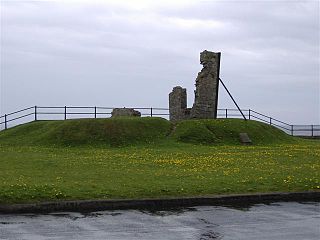
Hango Hill is an historic mound on the coast road between Castletown and Derbyhaven, Malew parish, Isle of Man.
References
- ↑ Journal of Manx Museum. Accessed 28 August 2014